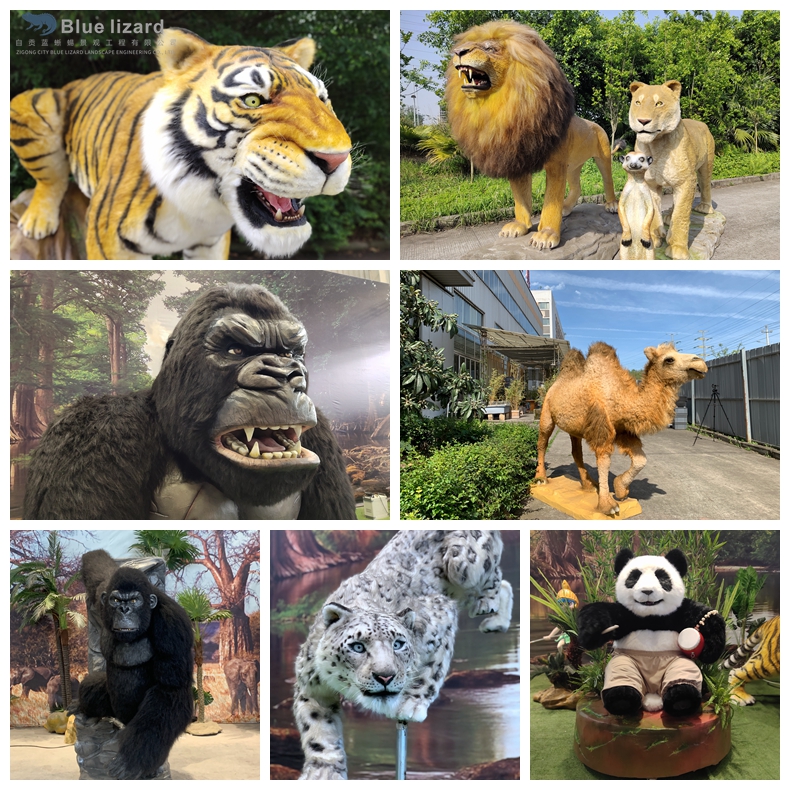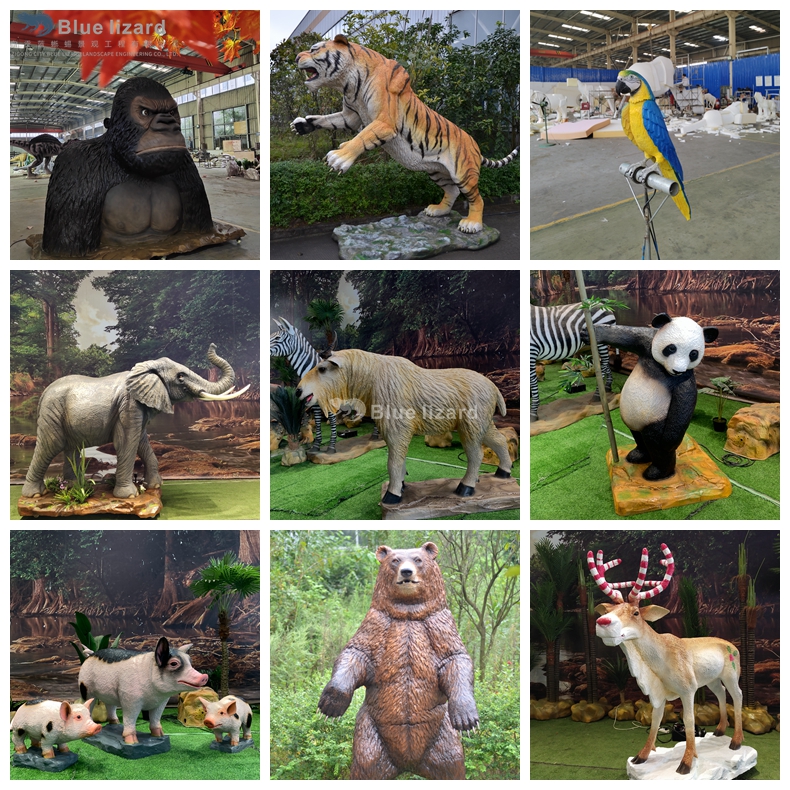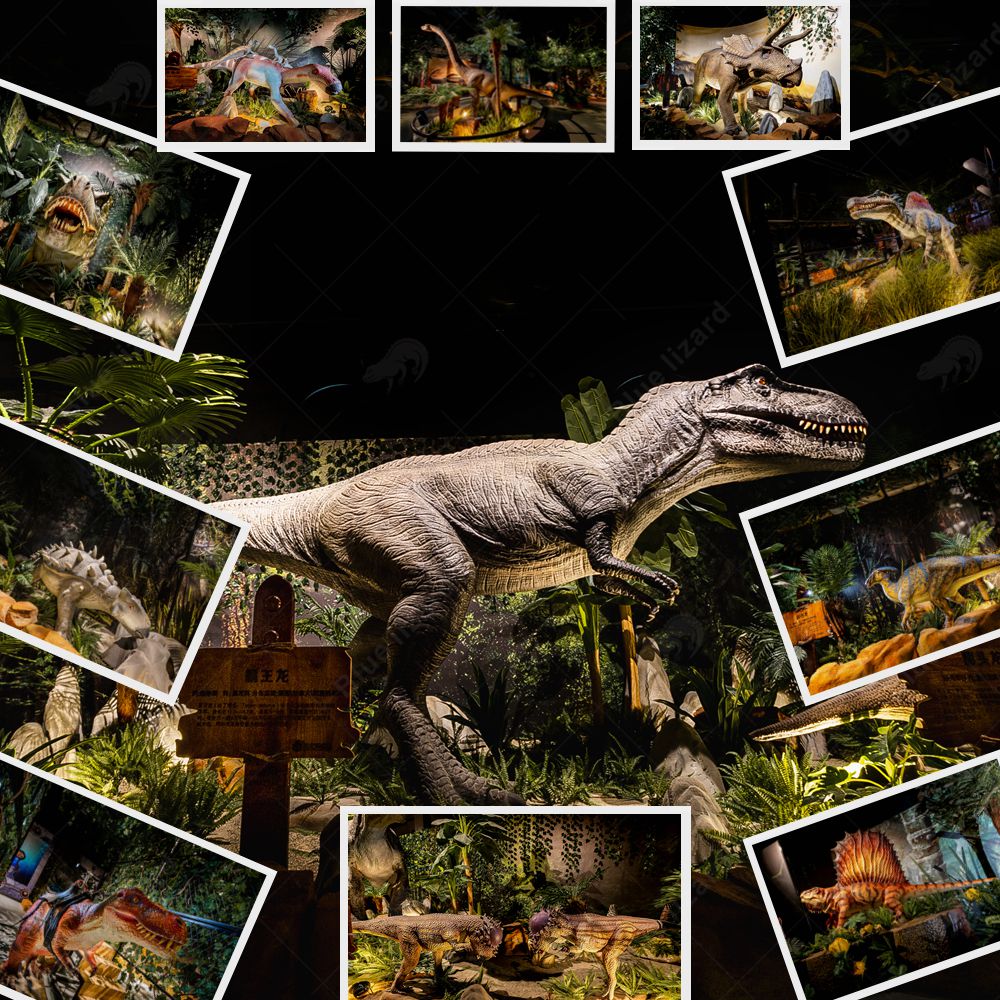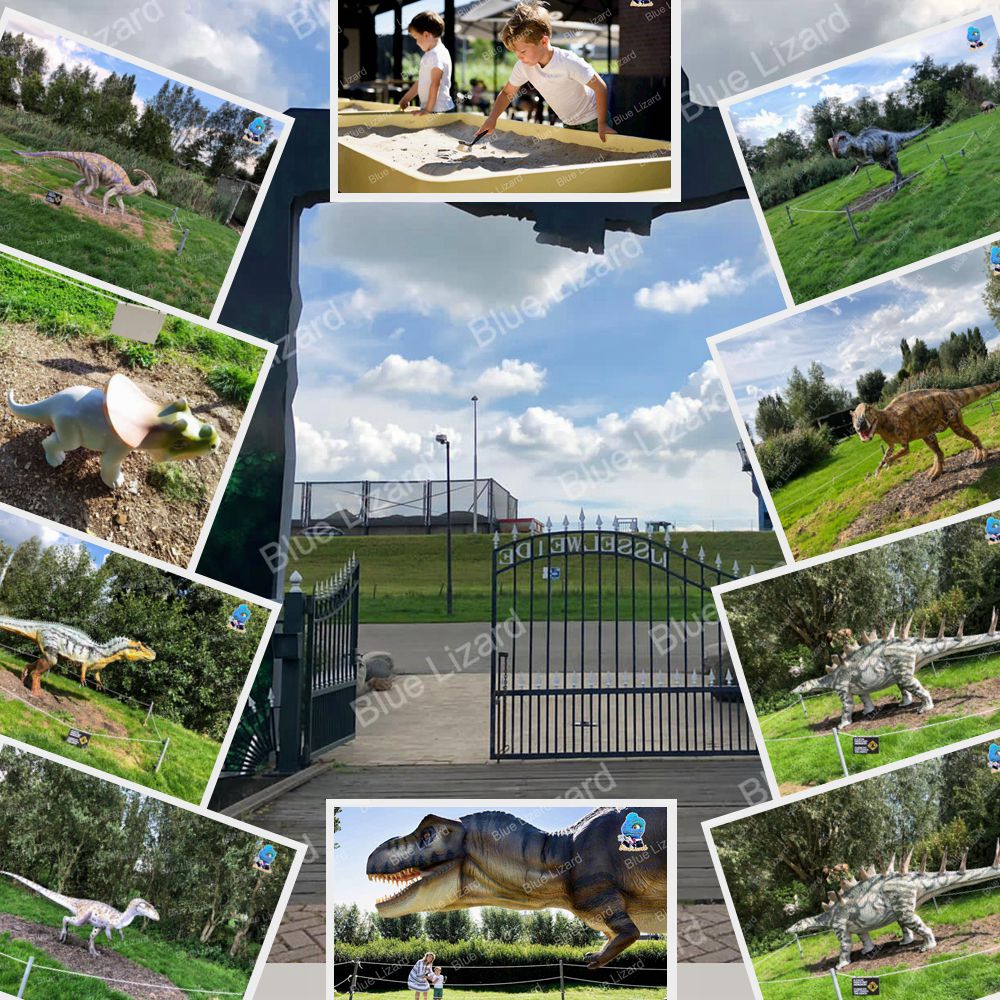
In recent years, the demand for simulation animal models has surged across various industries, including education, entertainment, and so on. These lifelike animatronic animal replicas serve as invaluable equipments for exhibition, decoration or entertainment. However, a key consideration in their application is whether to utilize them indoors or outdoors, as each environment presents unique challenges and advantages.
Simulation animal models are primarily crafted from two types of materials: simulation fur for indoor use and silicone sculpted fur for outdoor applications. The simulation fur models are designed to mimic the appearance and texture of real animals, making them ideal for indoor settings such as zoo park, museums, theme parks, children parks, shopping mall, etc. Their realistic design enhances experiences, allowing tourists to engage with lifelike representations without the ethical concerns associated with live animals.

On the other hand, silicone sculpted fur models are engineered for outdoor environments. These models are more durable and weather-resistant, making them suitable for zoos, parks, and outdoor amusements park. Their robust construction ensures they can withstand various weather conditions while maintaining their aesthetic appeal.

In conclusion, whether for indoor or outdoor use, simulation animal models play a crucial role in education, conservation, and entertainment. As technology advances, the quality and functionality of these models will continue to improve, paving the way for more immersive and impactful experiences across various sectors.

Post time: Oct-08-2024







